EV chargers and electricity supply explained
Understanding the details of EV chargers and electricity supply can be complex. This page explains how the different types of chargers, charging cables, and electricity supply affect EV charging.
Understanding the details of EV chargers and electricity supply can be complex. This page explains how the different types of chargers, charging cables, and electricity supply affect EV charging.
EV chargers are split into three levels based on their charging speed.
The actual charging speed can vary depending on the type and model of your car, the type of power being supplied, and on the specific charger.
The charging speeds (and driving ranges per hour charged) shown below are provided as a general reference, and are calculated based on guidelines from the Australian Renewable Energy Agency and using the example of a Hyundai Ioniq with a 77.4kWh battery.
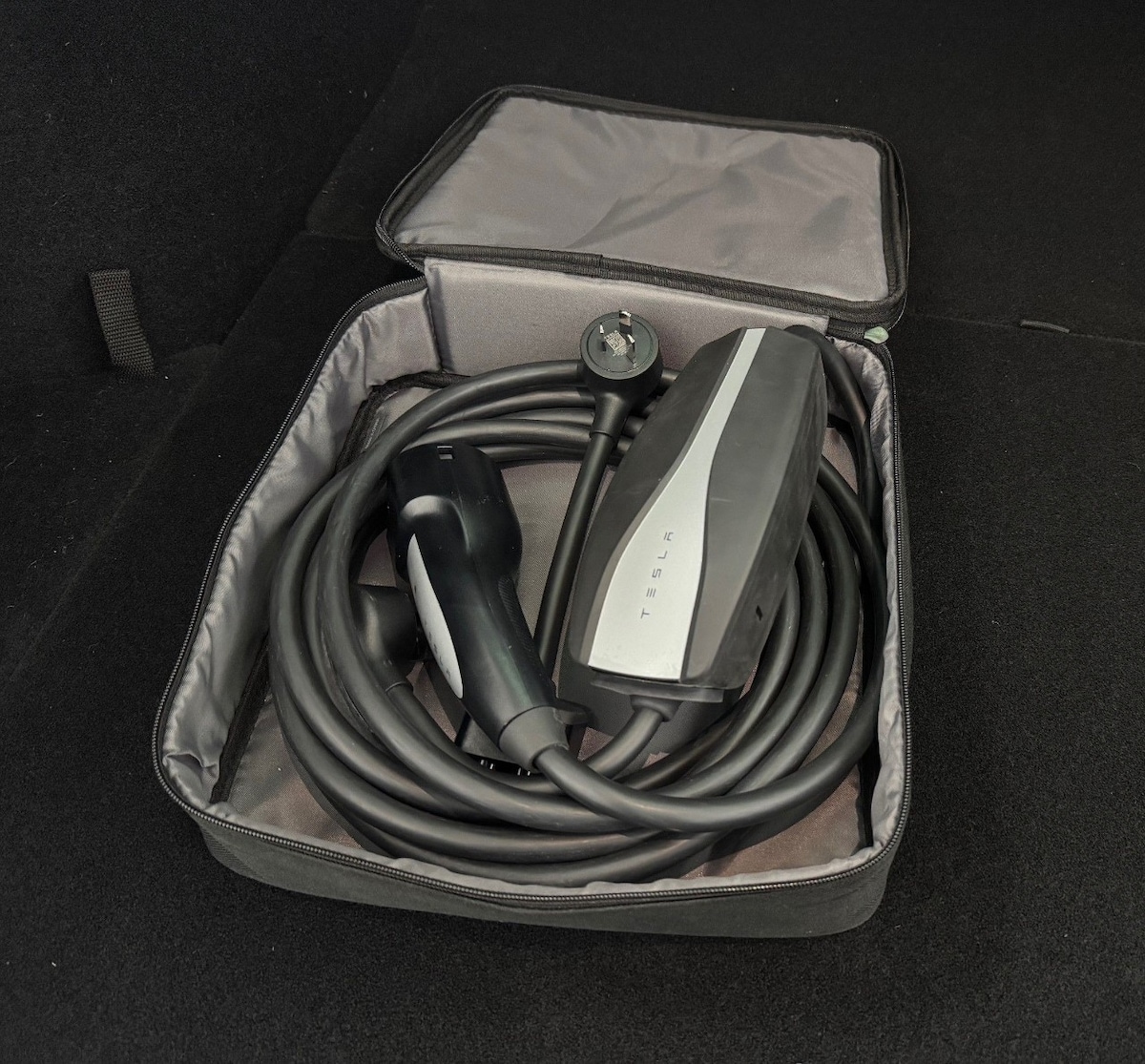
Level 1 chargers are a portable charging cable which can be plugged into any standard power point.
All AGL EV subscription cars come with a level 1 charger.
Charging speed 2.4kW
This will give you around 15km of driving range per hour charged.
Level 1 chargers can’t fully charge an EV overnight.
Requirements for use
Access to a standard power point.
Suitable for
Topping up your car before a short commute.
Charging plug-in hybrids (PHEVs), which come with smaller batteries than fully electric vehicles.
Emergency charging when you’re not close to a more powerful charger.
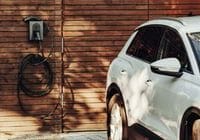
Home chargers are level 2 chargers. Some public chargers are also level 2 chargers.
Home chargers are mounted on a wall and connected to your building’s electrical supply. You can purchase a level 2 charger from our home chargers page.
Charging speed depends on the type of power being supplied to the charger.
Single-phase power: 7kW
This will give you around 42km of driving range per hour charged.
Three-phase power: 11Kw
This will give you around 66km of driving range per hour charged.
Requirements for use
Home chargers need to be purchased and installed. For more information, take a look at our home charger range.
Some public chargers require a type 2 to type 2 cable. You can rent one from AGL with an EV subscription.
Suitable for
Topping up your EV in a few hours (e.g., at a shopping centre).
Fully charging your EV overnight.
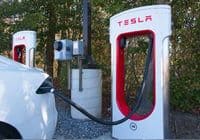
Level 3 chargers are extremely fast, and generally only found at public and commercial charging locations.
Tethered chargers have the charging cable permanently attached to the charging station. On untethered chargers, the cable can be disconnected at both ends and removed.
It’s a good idea to keep an untethered cable in your car to use at public charging stations. Most EVs and chargers in Australia will need a type 2 to type 2 cable, which has a type 2 plug at each end.
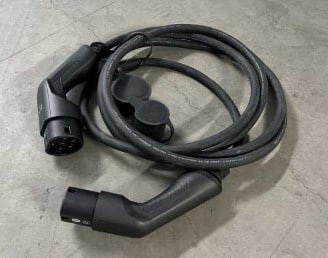
The main difference between types of charging cables for EVs is the type of connector at the ends of the cable. You’ll need a cable with the right plugs on each end to fit into the socket on your car and the socket on the charger. In Australia, type 2 connectors have been standard since 2018. (This is different to level 2, which refers to the speed of chargers, not the connector type).
In Australia, the only cable you will need is a type 2 to type 2 cable for using with home chargers and level 2 public chargers. Many chargers have their own tethered cables, but it’s useful to have one.
All level 3 chargers have tethered cables, so you won’t need to bring your own.
Most level 3 chargers have CCS2 plugs, which fit almost all EVs. Some level 3 chargers have CHAdeMO plugs, which fit Nissan Leafs and certain Plug-in Hybrid EVs.
It’s a good idea to make sure your type 2 charging cable can handle both single-phase and three-phase electricity.
Most homes have single-phase, but many public chargers have three-phase power. Getting a cable that can handle three-phase power will make sure you’re able to charge your car much faster with public chargers.
AGL can provide a three-phase type 2 charging cable with your EV Subscription for a small weekly fee.
In Australia, single-phase power is standard for homes and small businesses. Three-phase power is more commonly used in business settings with higher power demands. Three-phase power is also found in some homes, but this is uncommon.
Whether you have single- or three-phase power in your home, we have a charger to suit it. Choose one from our home chargers page, then use the drop down to select the power level. Choose 7kW for a single-phase charger, and 22kW for a three-phase charger.
The pros: Single-phase chargers are cheaper to install, and great for overnight charging.
The cons: EVs can draw a lot of power, so if you have other high energy items in your house (especially a second EV) you might find that you aren't able to run everything at the same time. We recommend choosing a charger that has a ‘load balancing' feature – this adjusts the rate at which your EV draws power while charging to reduce the potential for impacts on your other appliances.
The pros: Three-phase chargers charge your EV more quickly than single-phase chargers, and allow you to run multiple high-energy appliances at the same time.
The cons: If you don't already have three-phase power you'll need to run new cables to your home, which makes installation expensive. Also, some EVs are limited to 11kW AC charging, so can’t be charged at the full 22kW which three-phase chargers can offer.
How to check what kind of power your home has
There are three main ways to find out what phase power your home has.
On the board you’ll see a set of 'poles' that have switches on them. Look for a label that says Main switch or Normal supply main switch, and count the number of switches.
Three switches means you have three-phase power. One switch means you have single-phase power.
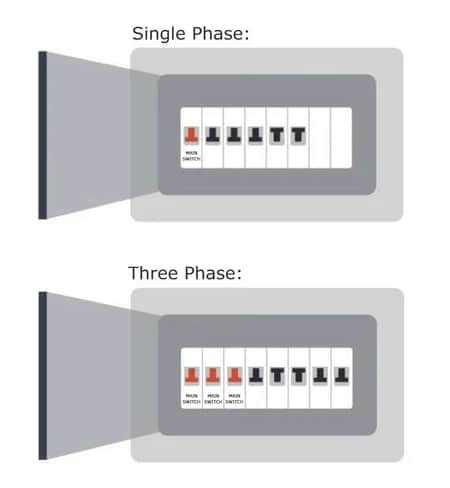
Sometimes the board will have the phase written on it in words or symbols.
Words to look out for are:
Single Phase, Mono-phase, 1-phase (for single)
Tri-Phase, Polyphase, 3-phase (for 3-phase).
Symbols to look out for are:
The symbol for single-phase is an on/off symbol with a single switch.
The symbol for three-phase power is an on/off symbol with 3 switches.
You can also check the voltage, which is always written on the main switch.
Single-phase power is 240V.
Three-phase power is 415V.
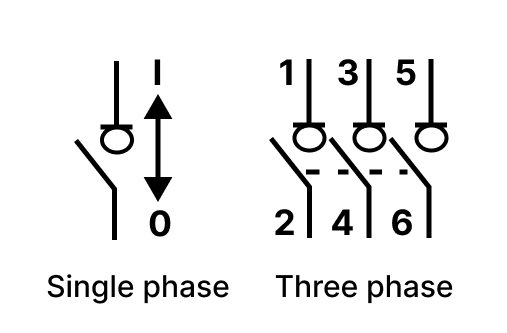
We have the phase information for our customers' homes, so if you can’t find out from your switchboard you can always give us a call.
All homes and home chargers use AC power, and so do level 2 public chargers. Level 3 public chargers use DC power.
The only difference for an EV driver is the speed of charging – DC chargers are much faster than AC chargers.
AC and DC are two types of electrical currents used to power devices.
The electricity grid supplies AC power to homes and businesses. The electricity in a regular power point is AC, and appliances like refrigerators, air conditioners, and lights run on AC power.
Batteries store energy as DC power. Portable devices like smartphones and laptops run on DC power, and so does your EV.
Before AC power can be stored in a battery, it needs to be converted to DC – that’s why your phone and laptop need to be charged with specific adaptors.
In terms of electric vehicles, the difference between AC and DC chargers comes down to where the conversion happens.
AC chargers move AC power from the electric grid straight into your EV. When you plug your EV in, the car’s onboard charger has to convert that power to DC before it can be stored in the battery.
Home chargers are AC chargers, which is why charging at home typically takes longer than charging at a DC fast-charging station.
DC chargers take AC power from the grid and convert it to DC power before it enters your EV. The converter inside the charger is more efficient than converters found inside EVs, making them much faster at charging the battery.
Public DC chargers also tend to have a higher power supply than AC chargers, which lets them push a lot of power straight into the battery without causing a bottleneck at the car’s onboard charger.
The high upfront costs of setting up DC charging means that it’s mainly built for public charging stations and for charging fleet vehicles.